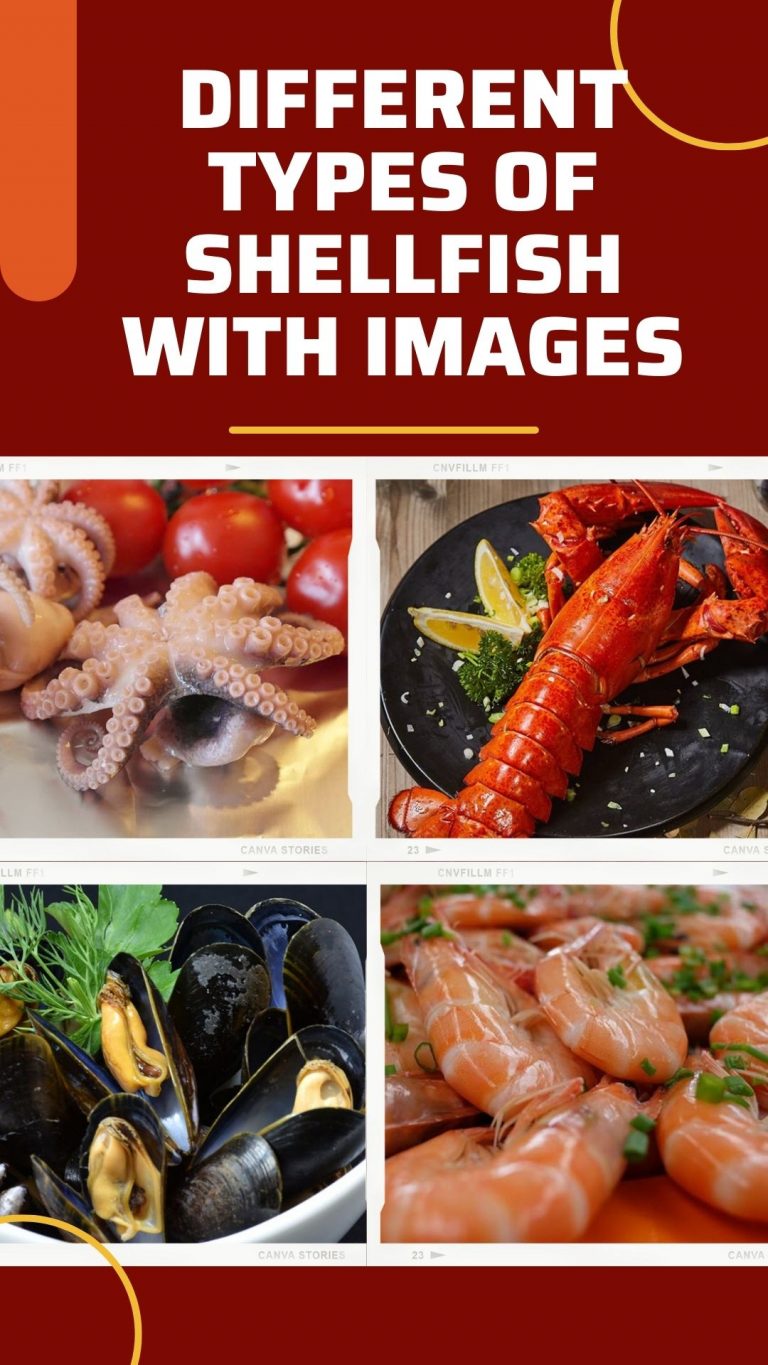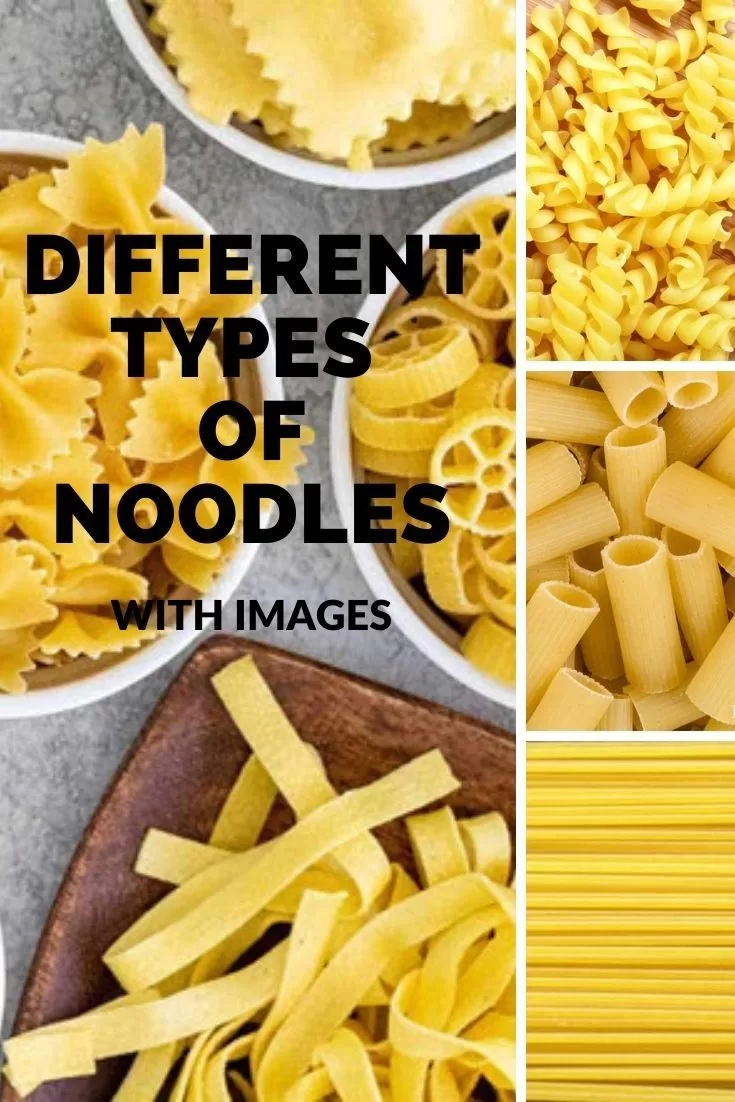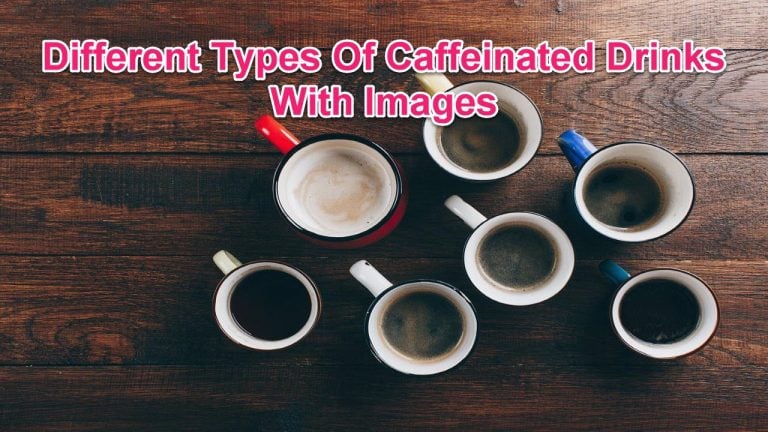Safflower vs Saffron: What Is The Difference?
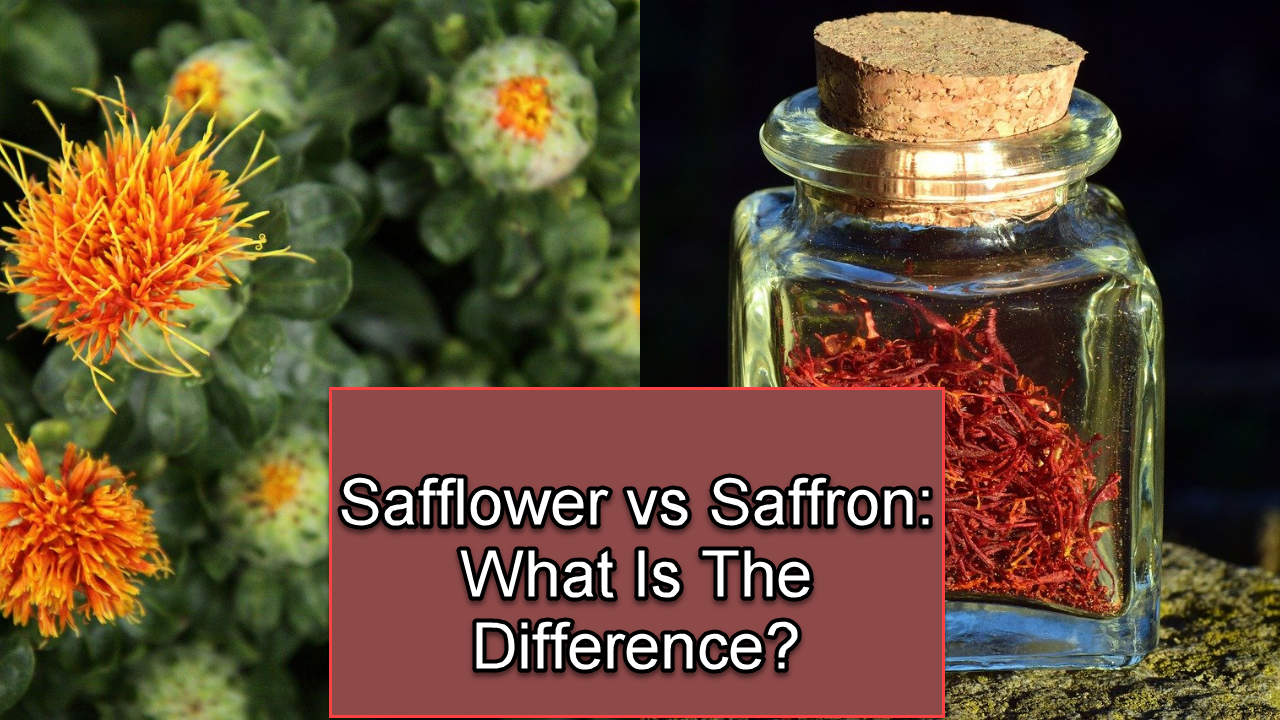
Spices enhance the flavor of our dishes. Today, let’s get to know more about Safflower and Saffron. Safflower and Saffron are two different spices. Each has a distinctive flavor. So, what are their main differences? Let’s find out below.
Safflower vs Saffron
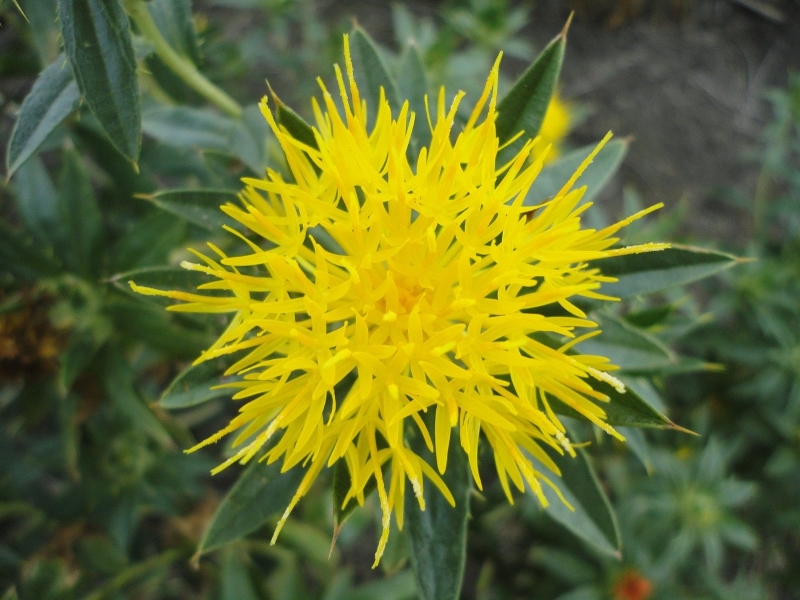
What Is A Safflower?
Safflower or Carthamus tinctorius is a herbaceous, highly branched plant that belongs in the sunflower family Asteraceae. In appearance, it is a thistle like plant. Safflower plant is cultivated for vegetable oil. Safflower oil is extracted from the seeds. Safflower was used as a Saffron substitute by the early Spanish colonies along the Rio Grande.
Safflower plants grow 12 to 59 inches tall, with globular flower heads. The color of the flowers can be yellow, orange, or red.
Safflower is native to Asia, Africa, central India to the Nile river.
Harvest
When Safflower matures, most leaves turn brown approximately 30 days after flowering. Typically, seeds fall from the head when rubbed.
A small grain harvester is used to harvest the seeds. Moisture should not exceed 8% to allow for a safe, long period storage. The process of drying is done similar to sunflower. To avoid damage to the seed and provide good quality, temperatures must not exceed 109 °F.
Safflower Flavor
As a flavoring agent, safflower has a very mild flavor. The taste is like a sweet chocolate. It also has a very rich aroma. The flavor of safflower is weaker compared to saffron, and lessens when cooked.

Uses Of Safflower
Traditionally, the plant was cultivated for its seeds, and used for flavoring and coloring foods, medicines, and producing red and yellow dyes.
Safflower as an edible oil
Usually, safflower plant has been grown mainly for the production of vegetable oil extracted from seeds. The safflower oil is colorless and flavorless. It is mainly used in salad dressing, and making margarine. Safflower oil is also used in cosmetics.
Safflower produces various kinds of oil. It produces oleic acid which is high in monounsaturated fatty acid, and linoleic acid which is high in polyunsaturated fatty acid. The predominant edible safflower oil market is for the former, because it is lower in saturated fats. This is ideal for frying food at high temperatures. As for the latter, it is used in painting in the place of linseed oil, usually in white paints.
Safflower as Saffron Substitute
Safflower is a cheaper substitute for saffron. Sometimes referred to as the false saffron, the poor man’s saffron, or bastard saffron.
Safflower as a Herbal Tea
To prepare a safflower tea, the dried safflower petals are soaked in hot water. Consuming safflower tea has a lot of health benefits. It can improve cardiovascular health, and can ease painful muscle. The tea is also perfect for those wanting to cleanse their system, flushing unwanted toxins from the body. The tea also aids in weight loss.
Safflower is rich in antioxidants and anti-inflammatory properties. It can help reduce inflammation of the joints, such as arthritis or gout.
Safflower as a Dye
Basically, the dried flowers are used as a natural dye source for orange and red pigment carthamin. They are also used as a food coloring.
Safflower as a spice
People use dried flower petals as a culinary spice. The spice is added in soups, rice dishes, and stews.
Coloring capacity
Large quantity is needed to achieve a yellow color in food.
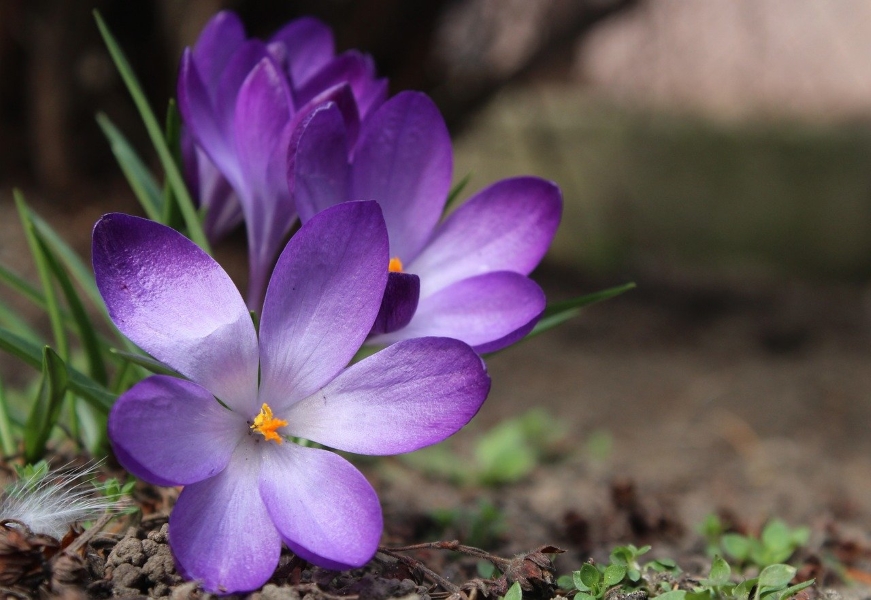
What Is Saffron?
Saffron is also known as saffron crocus, it is a spice derived from the flower of Crocus sativus. Saffron is a spice that we can get from the stigmas of the plant Crocus Sativus. Threads, which are the vivid crimson stigma and styles are gathered and dried mainly as a food coloring in seasoning . This spice is available all year round, and you have the option to buy it in golden-red strands or ground.
Saffron originated in Asia Minor. People in this region have used saffron for perfumes, medicines, dyes, flavorings and food for thousands of years.
Harvest
Saffron’s high retail value on the world market is maintained because of the labor-intensive harvesting ways. Generally speaking, it needs 440,000 hand-picked saffron stigmas per kilogram. The reason why saffron is expensive because forty hours of labor are needed to pick 150,000 flowers, and laborer must be extracted by hand.
Saffron Flavor
Saffron is known to be one of the world’s most expensive spice. Saffron has a beautiful golden color and provides a spicy and aromatic flavor to dishes. Saffron has a strong and intense flavor. The taste is like a honey with a hint of spiciness.
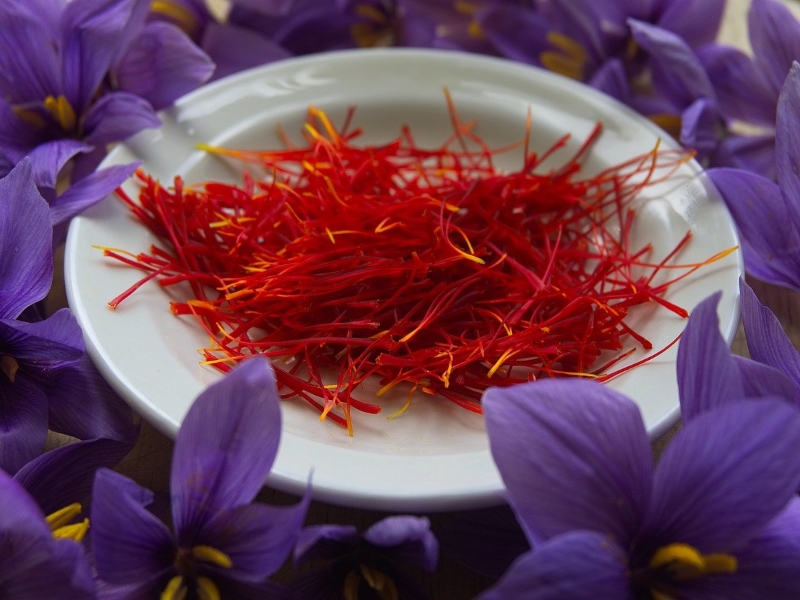
Uses of Saffron
Saffron has cancer fighting properties. It is believed that saffron contains compound chemicals that can kill cancer cells, reduce swelling, and can work as antioxidants to protect cells from free radicals.
Saffron can also improve mood. Saffron supplements are effective in managing mild to moderate depression symptoms.
In India, saffron is an essential ingredient in many recipes of rice, ice creams, and sweets. In Saudi Arabia, their coffee is infused with saffron. While in Spain, it is an important ingredient in dishes such as Paella.
Saffron is also used to relieve menstrual cramps.
Coloring capacity
Small amount is needed to achieve an intense yellow color in your dishes.
Cooking using saffron
You only need a little amount of saffron to spice up your recipe. A little goes a long way. Just a pinch in soups and stews are enough.
Saffron is also perfect for seafood dishes, such as paella and bouillabaisse. It is also used in rice dishes and risotto. To get a delicious marinade for fish, add saffron threads, thyme and garlic to vinegar.
Nutritional value
Dried saffron contains 6% fat, 11% protein, 12% water and 65% carbohydrates. 29% manganese is also present in one tablespoon of saffron.
Storing saffron
It is recommended to store saffron in a dark place. Saffron is very sensitive to moisture and light. Place it in a container and store it away from the sunlight. If you store it properly, it can last for years.
If you store saffron in a freezer, it can maintain its flavor for up to two years.
If you decide to transfer saffron to a new a container, ensure that the container is properly cleaned and odor-free before using it. This is to prevent saffron from absorbing other flavors and odors.
Conclusion
With that said, spices such as safflower and saffron have a lot of health benefits. People often use saffron for anxiety, depression, menstrual cramps and other conditions. Saffron is mainly used for flavoring and food coloring. While safflower is a good source of healthy fatty acids, it lowers cholesterol and can prevent heart diseases. It also reduces inflammation. Safflower is used for the production of vegetable oil for cooking and and food coloring.
